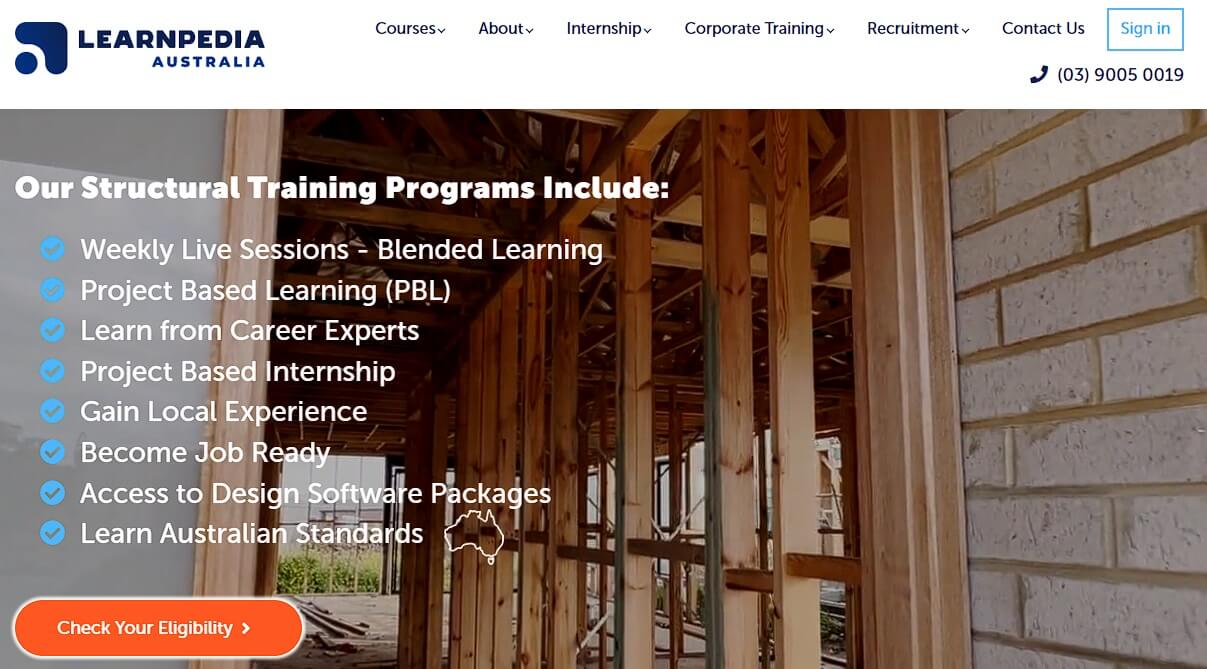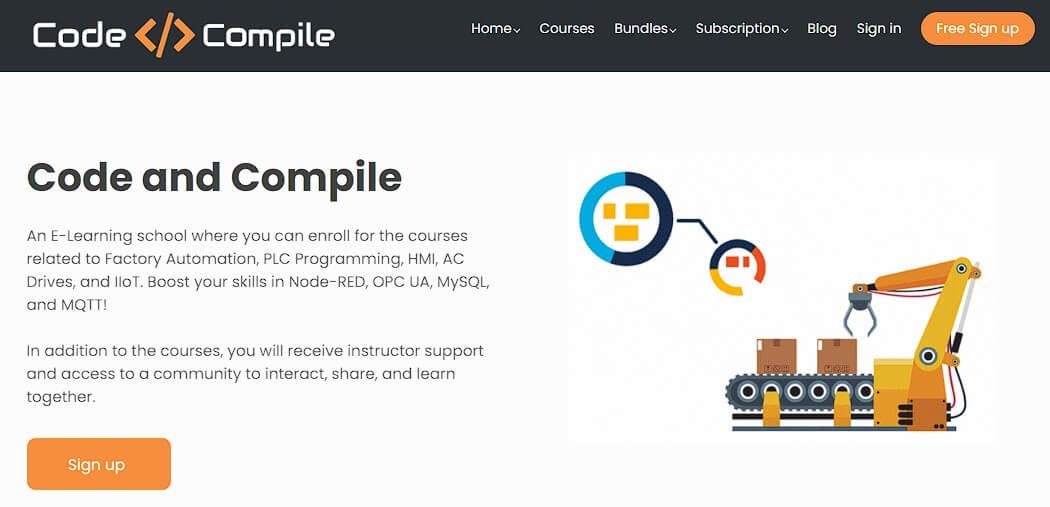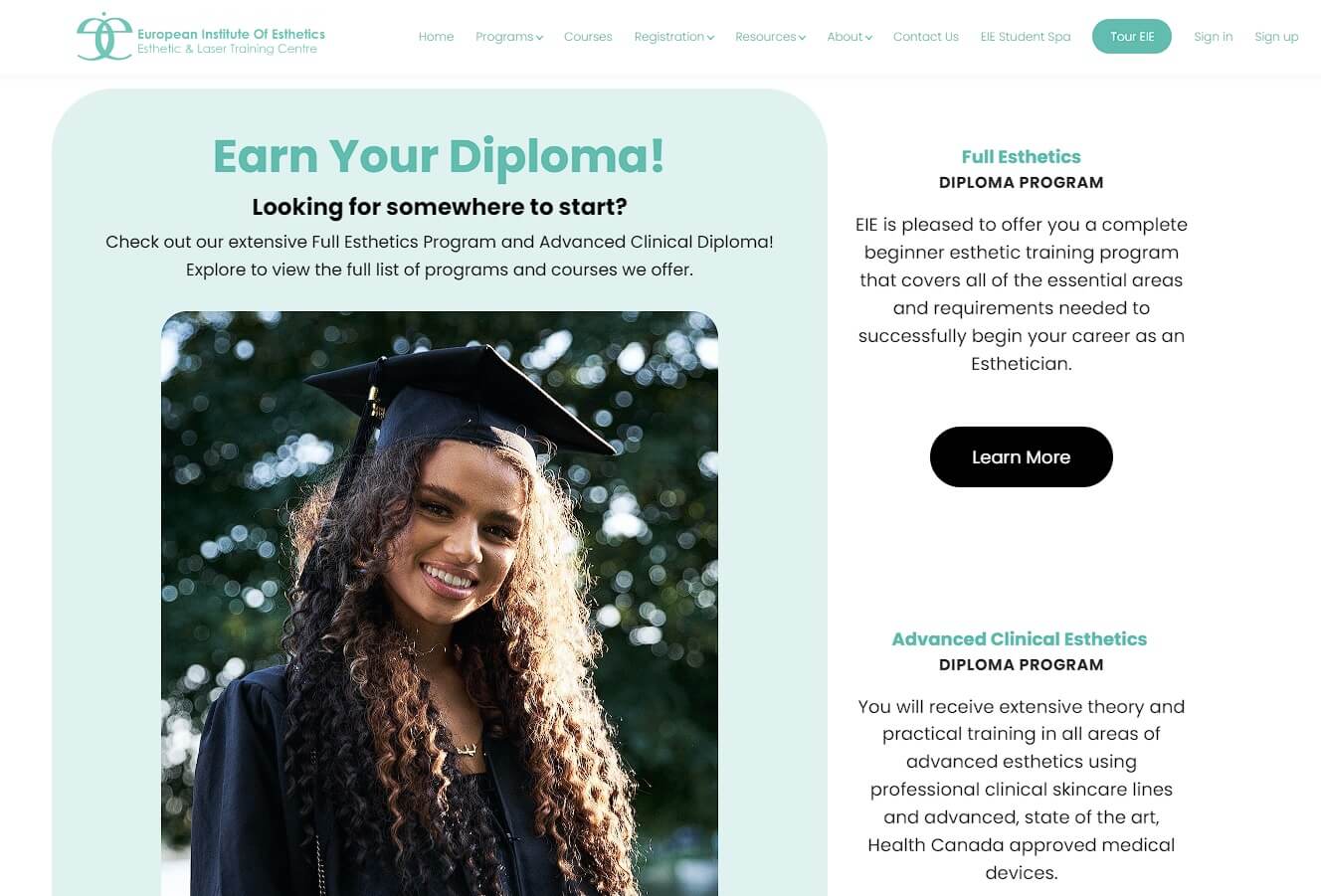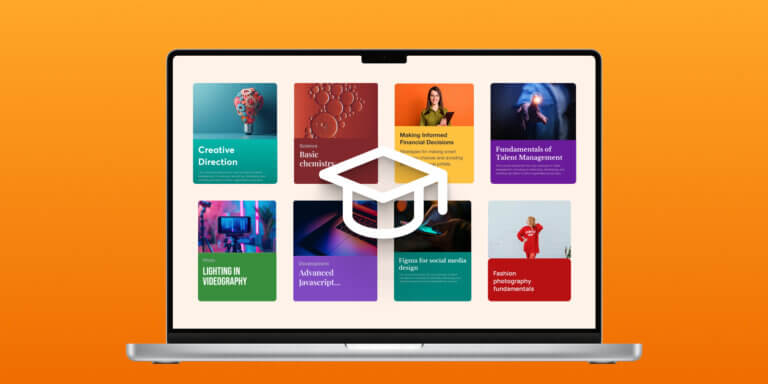Table of Contents
Starting an online school in 2025 might sound like a bold move, but it doesn’t have to be complicated. Whether you’re a coach, educator, business, business owner, or aspiring edupreneur, the right platform, pricing model, and content strategy can help you deliver high-quality online education, without tech overwhelm.
Today, thousands of course creators, coaches, and certification providers are using learning management systems (LMSs) to train people at scale. From community-powered coaching programs to fully branded academies with SSO and SCORM support, online schools have become more flexible, accessible, and powerful than ever before.
Still, most people ask the same question: “Where do I even start?”
In this guide, I break down that question for you into five clear, actionable steps, covering everything from choosing your niche, deciding on your revenue model, and designing your first online course to picking the right tools, engaging your learners, and marketing your own online academy to your first 100 students.
What most online-school guides miss (and what actually matters)
If you’ve read a few articles about how to start an online school, you’ve probably seen the same advice repeated: pick a platform, upload your content, and start selling. Some guides make it sound overly simple. Others dive straight into comparing tools without helping you define what you’re actually trying to build.
But what’s often missing is what really matters when you’re starting from zero:
This guide takes a different approach. It’s practical, honest, and focused on the decisions that truly shape a sustainable, valuable online school.
Step 1: Choose your niche and learner outcome
The first thing to consider when starting an online school isn’t your budget, your curriculum, or your website, it’s your learners. Get clear on who you’re teaching and what they’ll get out of it. Everything else will fall into place more easily once you have that clarity.
Start with the learner, not the content
Yes, it’s tempting to begin with slides, scripts, or videos, and dive directly into creating your online classes as soon as possible. But before you build anything, focus on your learners.
Try to get an in-depth understanding of them.
Start with answering questions like these that will help you know your potential learners better. The more specific the outcome, the more compelling and effective your course will be. Clarity here is what separates high dropout rates from high-performing online programs.
Test your idea with this simple formula
Not sure if your course idea is specific enough? Try this quick positioning statement:
“I help [audience] achieve [outcome] through [topic].”
If the sentence feels vague or hard to complete, your niche may need refining. This will help you create an online course that solves a real problem, and makes your educational offering easier to market later.
Should you choose a competitive niche?
In most cases, yes. Competition usually means there’s demand. You don’t need to reinvent the wheel, but you do need to bring a unique angle. Here’s how you can do this:
You don’t have to be loud, you just need to be clear, useful, memorable, and as I mentioned above, solve a real problem for your target audience. That’s what helps you stand out in a growing online learning market.
Step 2: Decide your revenue model
Pricing your course, and deciding whether to charge at all, is one of the biggest early decisions you’ll make. Your revenue model affects more than just your income. It shapes how you design your offer, the level of support you provide, and the overall structure of your online school.
But there’s no one-size-fits-all answer. The right model depends on your content, audience, and goals.
Common revenue models for online courses
Here are some of the most popular models used by course creators and training providers:
Each model suits different types of learning experiences, from self-paced education to certification prep and group coaching.
Curious about how course creators are making money? I broke down the most effective models, strategies, and tools in this article: How course creators monetize: models, strategies & tools
If you’re just starting out, a one-time payment model is often the simplest to launch and market.
Know your break-even point
Before you launch, take a moment to calculate your break-even point, that is, the number of course sales you need to cover your initial costs. It’s a simple but powerful way to ground your expectations and ensure your pricing makes sense.
Here’s the formula:
Total fixed costs ÷ Price per course
Fixed costs include things like video production, tools, platform subscriptions, or any upfront investments. The price per course is what you’ll charge each learner.
For example:
If your total setup costs are $1,500 and you plan to charge $200 per course, then: $1,500 ÷ $200 = 7.5 students
You’d need to enroll at least 8 students to break even.
Knowing your break-even point helps you avoid emotional pricing decisions and gives you a solid foundation for your business plan. Even if you’re offering a low-cost course to increase accessibility, it’s important to make sure it’s still financially sustainable.
When starting free makes sense
Offering a free course can be a smart strategy, especially if you’re building your audience, validating a topic, or nurturing leads.
But free doesn’t have to mean forever. Many creators use free content to build trust and then guide learners toward premium programs. This freemium model in online learning works best when there’s a clear path from free value to paid transformation.
Additional ways to generate revenue
As your online school evolves, you can build multiple income streams, such as:
The key is to align your revenue streams with learner needs, and build a successful venture that grows sustainably over time.
Step 3: Choose your tech stack and LMS
Once you’re clear on your course topic and revenue model, the next step is choosing the tools that will help you deliver and scale your course, starting with your learning management system (LMS).
Your tech stack is more than just where your course lives. It shapes the entire learning experience: how learners access content, how payments are handled, how progress is tracked, and how you manage certificates, analytics, or even compliance.
Ideally, your LMS should bring all of this together in one place, reducing complexity and saving you time. While there’s no one-size-fits-all setup, asking the right questions can help you choose a platform that fits your vision and workflow.
Must-have vs. nice-to-have features
When you’re choosing an LMS or eLearning platform, it helps to think of it in two parts, the must-haves and the nice-to-haves.
Must-haves are the non-negotiables, the features that support your core learning experience. These might include:
Nice-to-haves are features that may not be essential for your first course, but could become valuable as your online school grows. For example:
The right mix will depend on your business model and the kind of learning environment you’re trying to create for your local or global audience.
What different types of creators need
Our customer success team at LearnWorlds has worked with thousands of course creators, and one thing we’ve learned is that needs vary widely depending on your audience and goals. Here are a few examples:
This is where choosing the right online platform really matters, it should align with both the learner experience and the admin experience.
Balancing flexibility with ease of use
One of the biggest choices you’ll make when picking tools is between control and simplicity.
For example, you could build your online school with a wordpress website and several plugins. That gives you full control, but it also means more work, like handling updates, security, and tech issues.
On the other hand, an all-in-one LMS is easier to set up and manage. You might have fewer customization options, but it’s faster to launch and less stressful to run, especially in the beginning.
When you’re just starting out, simplicity is usually the better choice. You can always add more tools later as your school grows. Focus on what you need for your first course and your first students, not every possible feature down the line.
What matters most is building a strong learning experience on a platform that supports you and your audience.
Step 4: Design content that keeps learners engaged
Creating a course goes beyond organizing information. It’s about building a learning experience that feels motivating, accessible, and worth completing. One thing I hear often from our customers is how surprised they are by the challenge of keeping students engaged, especially past the 30% mark of a course. It’s a common drop-off point. But with the right content strategy, it’s something you can design for and improve over time.
Start with a clear learning structure
Every successful course begins with a clear structure. This includes:
Whether you’re building a coaching program, a virtual classroom, or an on-demand training library, this kind of structure gives learners a path to follow, and a reason to keep going.
Offer content in different formats
Every learner absorbs information differently and at their own pace. Some need to see it, others need to do it, and some just want to hear it while walking the dog. That’s why the format you choose plays a huge role in how effective, and engaging, your online school will be.
You don’t need to make things resource-intensive by using every format right away. But offering variety can improve learning outcomes and boost your chances of reaching a wider target audience.
Start with the content you feel most comfortable creating, then expand from there.
I’ve seen creators improve course completion rates just by offering a mix, especially when they include audio lessons for passive consumption or mobile learning.
If you’re aiming to build a reputation for high quality online courses, variety is part of the experience.
It also improves access for learners with different needs and learning styles, an important consideration when creating quality education in the online space.
Progress is one of the strongest motivators in learning
When learners feel like they’re moving forward, they stick around. That’s why small milestones matter. Use checklists, visible progress bars, or short assessments to show students how far they’ve come.
You can also encourage momentum with weekly goals, auto-unlocked modules, or even gentle reminders between sessions. The goal isn’t just to “deliver content,” it’s to guide learners through a meaningful learning process.
Some simple ways to do this:
These small touches help create a sense of momentum. They also reinforce that learning is a process, not just a transaction.
Want to dive deeper into learner engagement? Check out this article I wrote, it covers practical strategies to engage your learners before, during, and after your course: How to motivate & engage learners to complete your online course
Support social learning and reflective learning
For learners who thrive on collaborative learning, consider ways to bring people together:
You don’t have to build a full online community, but offering spaces for collaboration can improve engagement and make learning feel more personal.
Keep improving based on feedback
Engagement isn’t something you get right once, it evolves. Listen closely to how learners are experiencing your material and adjust over time.
You can receive feedback through:
All of these help you improve the learning process while maintaining quality assurance across your course content.
Step 5: Your first-100 learner marketing blueprint
Launching your online school is one thing. Getting your first 100 students through the (virtual) door is another.
For many of our new customers, this is the most daunting part, especially if they don’t already have a large audience or experience with marketing. But you don’t need a massive following to get started. You just need a focused plan, a clear message, and a way to reach the right people.
To attract students, lead with the problem you solve and make the outcome feel tangible.
Here’s a simplified, four-week blueprint that many LearnWorlds creators have used to attract their first group of learners.
Week 1 – Define your audience and positioning
Start by getting very clear on:
This is the foundation of your message. From there, write a short, clear value proposition, something that could fit into a landing page headline or an email subject line.
For example:
“Learn how to build a WordPress site from scratch, even if you’ve never touched code.”
Focus on clarity, not cleverness.
Week 2 – Create your launch assets
Next, create a few simple but essential marketing pieces:
If your course is already built, you can also create a limited-time offer or early-bird discount to encourage sign-ups.
Week 3 – Grow your reach
This is where you get the word out.
Start with the channels you already have, your personal network, social media profiles, or past clients. Then expand into other spaces:
You don’t need to be everywhere, just choose 2–3 places where your target audience already spends time, and show up there with something helpful.
Week 4 – Nurture and convert
Now that you have visibility, focus on guiding people toward enrollment.
Even if you start small, your first students can help spread the word, share feedback, and make your course better.
Keep it simple and repeatable
Your first 100 learners won’t come from a perfect marketing funnel. More often, it’s a mix of personal outreach, smart messaging, and steady visibility. And once you’ve done it once, you’ll have a system you can improve with every new launch.
Tool-stack checklist (one-stop vendor section)
Once you’ve made the key decisions, your audience, content, pricing, and marketing plan, the final piece is choosing the tools to bring your online school and online training to life.
This is where many creators feel overwhelmed. There are dozens of learning management systems (LMSs), landing page builders, community platforms, and payment solutions out there. It’s easy to fall into research paralysis.
To help simplify the process, here’s a focused checklist of the core tools you’ll need, and what to look for in each one.
1. Your course platform (LMS)
Your learning platform will host your course content, track learner progress, and shape the entire learning experience. It’s the core of your tech stack.
Choose an educational platform that’s flexible, reliable, and designed for long-term growth.
Look for:
LearnWorlds is one of the platforms built specifically for creators and businesses selling online courses.
Customers use it to create interactive videos, offer branded learning environments, and combine content delivery with community and marketing tools.
Other platforms you might want to explore include:
Each has its strengths. What matters is finding a platform that fits your current needs, and can grow with you as your online academy expands.
2. Website and landing page builder
Your landing page is often your first impression. You’ll want a builder that helps you clearly communicate your course value and drive conversions.
If your LMS includes this feature (as LearnWorlds does), great. If not, consider tools like:
3. Email marketing
You’ll need a way to stay in touch with potential students, send course updates, and deliver onboarding sequences.
Many platforms integrate with email marketing tools like:
Or you can use your LMS’s built-in email tools, if available.
4. Payment processing
Look for secure, trusted payment integrations that support one-time payments, subscriptions, and international currencies.
Ideally, look for an LMS platform that supports:
Make sure your platform helps you accept payments, issue invoices, and handle taxes where needed.
5. Analytics and feedback
To understand what’s working and improve over time, you’ll want data on:
Some LMSs offer built-in analytics. Others allow integrations with platforms like Mixpanel, Facebook Pixel, or custom dashboards.
Your tool stack, your workflow
There’s no perfect setup for everyone. What matters is choosing a few tools that work for you right now and don’t feel overwhelming.
The best tools are the ones that help you focus on teaching and creating value, not ones that distract you with tech issues or complicated setups.
Accreditation & credibility 101
Before I wrap up this guide of how to start an online school, I ‘d like to address separately one of the key questions many new course creators ask: Do you need accreditation to launch an online school?
The short answer is no, at least not always. But if you’re offering training in regulated fields, planning to issue certificates that employers or institutions recognize, or simply want to build trust, credibility becomes a key consideration.
Here’s what you need to know to navigate it with confidence.
What’s the difference between accreditation and certificates?
Accreditation is a formal process, usually carried out by a government body or recognized agency, that evaluates whether an education provider meets specific standards. It’s common in higher education, corporate training programs, and professional licensing paths.
Certificates, on the other hand, are credentials that you, as a course creator, can issue upon course completion. These don’t require formal accreditation, but they still offer value to learners when:
In short: you don’t need national accreditation to offer certificates. But how you position them matters.
When does accreditation make sense?
You might consider pursuing formal accreditation if you:
In these cases, it’s important to research the requirements in your country or state. Accreditation standards vary, and not all online platforms meet them by default.
Useful starting points include:
What about quality assurance?
Even if you’re not offering formal accreditation, you can still deliver a truly quality learning experience. It comes down to thoughtful course design and meaningful support.
Here are a few ways to build trust and credibility with your students:
These simple steps might not seem like much on their own, but together, they create the kind of experience that stands out, especially when learners are comparing your online school to other options.
Credibility takes many forms
Not every course needs to be accredited. What matters is that learners know what to expect, what they’ll walk away with, and why it’s worth their time.
Whether you’re offering online education as a skills-based bootcamp, a self-paced coaching course, or an internal training program, the best credibility often comes from delivering a thoughtful, well-supported learning experience, one that leads to real outcomes.
Get inspired by successful course creators
Now, you are probably looking for some inspiration on how others have built their own online school.
Let me share with you some stories by course creators who achieved success using LearnWorlds to create & deliver their online courses:
LEARNPEDIA AUSTRALIA
Industry: Structural Engineering

Learnpedia trains engineers through a hands-on traineeship program supported by elearning courses. Training a young generation of engineers on the engineering standards of Australia and the most important engineering design software.
Code and Compile
Industry: Industrial Programming & Automation

Code and Compile teaches Factory Automation, PLC Programming, HMI, AC Drives, and IIoT. Boost your skills in Node-RED, OPC UA, MySQL, and MQTT!
Along with the courses, the school has a vibrant community of students who interact, share, and learn together.
European Institute of Esthetics
Industry: Beauty & Esthetics

EIE teaches students everything they need to know about Spas and MediSpas. Graduates receive the knowledge and skills employers seek in today’s competitive market.
EIE Offers both beginner and advanced diploma-level online education on esthetics to begin a career as a professional in the beauty industry.
Ready to start your online school?
You’ve just explored a full roadmap, from defining your audience and choosing a revenue model to designing engaging content and understanding the tools that power online learning.
It’s a lot, but taken step by step, it’s doable. And it’s worth it.
Many course creators start with one idea, one course, or one community, and grow from there. Remember, what matters most is clarity: knowing who you’re helping, what they’ll walk away with, and how you’ll support them throughout the learning journey.
If you’re ready to put your plans into action, LearnWorlds gives you the structure to do it well, try it free for 30 days. From course creation and community building to payments, certificates, and insights, it’s all in one place, designed to scale with you and support your growth as an online educator.
Rosemary is LearnWorlds’ Content Marketing Manager. She has over 2 decades of experience in omnichannel marketing and content writing for the IT and SaaS industry. Her expertise lies in crafting effective content marketing strategies that attract, engage, and nurture customers, enabling LearnWorlds to reach its target audiences with precision.
FAQ
Everything you have ever wondered, but were too afraid to ask...


